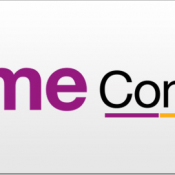Last night, I had the distinct honor and pleasure to be in the company of some very talented and intelligent individuals, via the Detroit NewMe Community Meetup group, at TechTown Detroit. I was instantly inspired by the accomplishments, struggles and general dynamism of the group. I’m looking forward to continuing a prosperous relationship with all who are able and willing to make worthwhile contributions. The cause is just. As in many industries, tech is dominated by a few, and the startup world, especially. This group is working toward breaking down the knowledge barrier between often disenfranchised communities and the at-large startup tech industry.
On this particular night Hajj Flemings, an inspiration to many young blacks aspiring toward tech greatness, spoke about the high level strategies involved in developing a startup pitch slide deck.This gentlemen is a contributor to BE.com, founder of Brand Camp University and co-founder of the startup gokit.me He broke down the various necessary sections to include in such a deck, and even expounded on some of the elements that makes those sections capture the attention of a potential investor. Those sections are:
- General Business Info and Company Name
- Define the Problem
- Discuss the Solution Your Company Offers
- Market Size
- Business Model
- User Acquisition Strategy
- Competitive Advantage
- The Ask
- The Team
- Contact Page
Additionally, we heard from James Norman, the CEO of Ubi, the next Detroit startup accepted to the NewMe Accelerator, in the second year of its existence. I just signed up for the service but was quite impressed with what I heard from the Founder and CEO on this evening.
I’m looking forward to learning, sharing and contributing more with this group of individuals as there was a plethora of talent in the room. I am excited to offer regular updates about the traction of my own, and all the startups represented here. If interested, feel free to contact me or hit the website to join. We’re open to include more like minded individuals to create a robust support group to benefit all of the aspirational goals of the people in this area and to grow the tech business landscape in Michigan.








Follow Us!